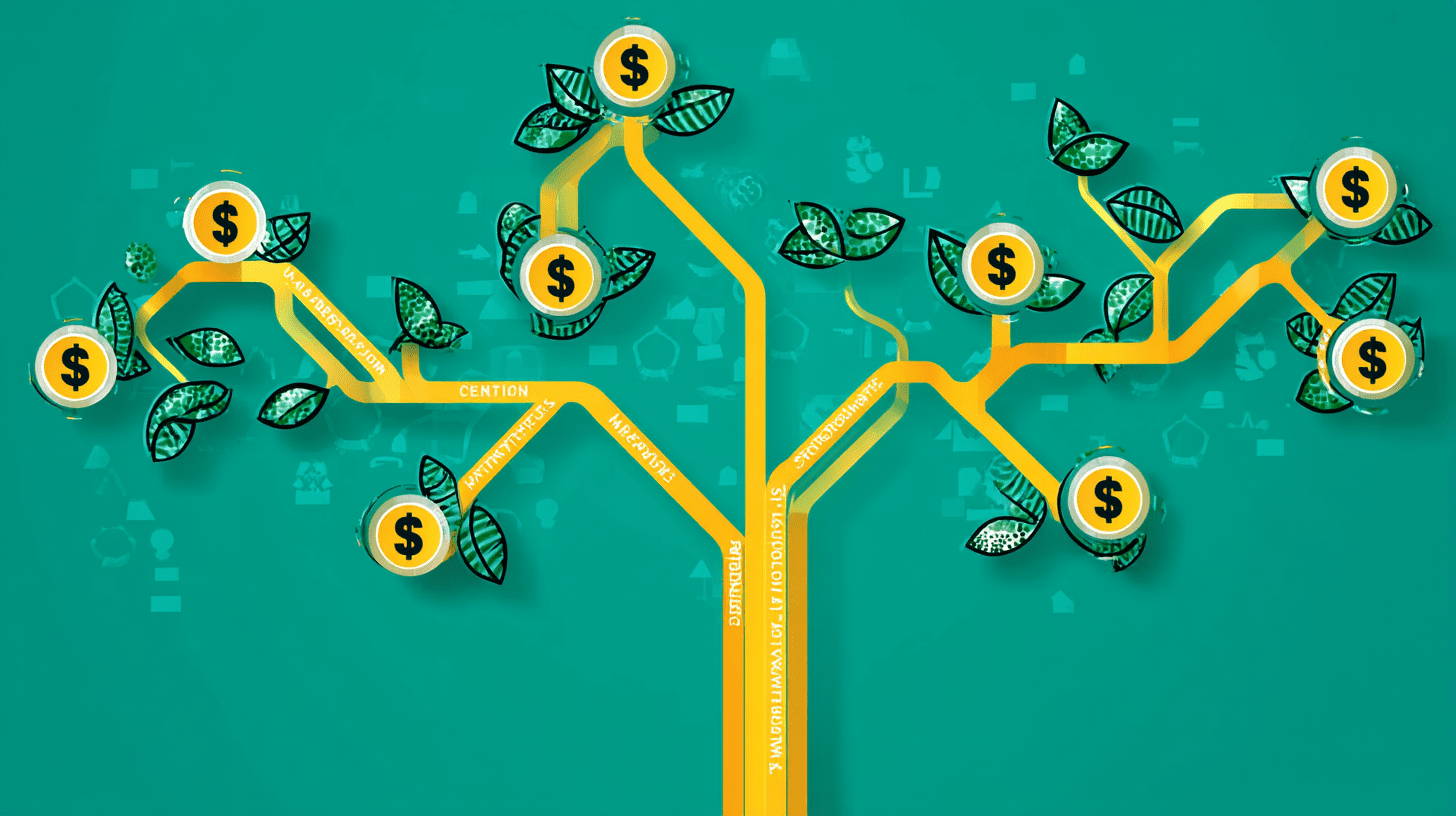Hey there! I’m excited to dive into one of my favorite topics: turning creativity into cash. I’ve spent years experimenting with different ways to make money from my content, from selling digital products to partnering with brands. In this post, I’ll walk you through the steps I’ve taken (and wish I’d known sooner) to create meaningful, revenue-generating content. By leveraging Natural Language Processing (NLP) for better online visibility, I’ve found it easier to connect with the right audience and expand my reach globally. If you’re curious about how to make the most of your creative skills, stick around—I’ve got you covered!
Understanding Content Monetization
When I first dipped my toes into content monetization, I was amazed by how many doors it opened. It’s more than just throwing ads on a website or hoping for donations. In essence, content monetization is any strategy that enables you to earn money from the materials you create—be it blog posts, videos, podcasts, or even social media posts. The point is to turn your creativity into a sustainable income stream.
Today, we have an array of tools and platforms specifically designed to help you monetize your content. For instance, YouTube’s Partner Program allows video creators to earn from ad revenue, while Patreon and other membership platforms give fans a chance to directly support you through monthly subscriptions. It’s never been easier to get started, especially as the global appetite for online content continues to grow.
But the abundance of options also means you’ll need to be strategic. Successful monetization comes from balancing what your audience wants with what you can feasibly provide. Before jumping in, ask yourself: “Who is my audience, and what do they find valuable?” This will guide you in picking the best methods for your specific talents and resources. After all, content monetization isn’t a one-size-fits-all approach; it’s about tailoring your efforts to fit your style, strengths, and goals.

Identifying Your Unique Skills and Talents
Finding success in content monetization often starts with knowing your strengths. When I began, I didn’t realize how important it was to identify the areas where I truly excelled—whether it was writing, design, video editing, or something else entirely. By focusing on what I did best, I could deliver real value to my audience. After all, if you’re trying to compete in a saturated market with skills you haven’t honed, it’s going to feel like an uphill battle.
One method I’ve used to pinpoint my talents is to list out everything I enjoy creating. Then, I ask myself which items on the list could solve a problem or improve someone’s life. Let’s say you love photography; people might pay for your professional shots, or you could sell stock images to businesses looking for high-quality visuals. You don’t have to be perfect at something to monetize it; you just need to be good enough to provide value.
Knowing your natural gifts also helps you stand out from the crowd. If your competition is largely made up of generalists, your specialized expertise could be exactly what draws in paying customers. Consistent self-reflection on your progress helps, too. By staying aware of your strengths and refining them through practice and learning, you’ll find it easier to pick the monetization strategy that fits you like a glove.
Building an Engaged Audience
No matter how incredible your content is, it’s tough to earn money if nobody’s paying attention. I realized early on that audience engagement is the backbone of profitable content. Quality always beats quantity here. You might have thousands of followers, but if none of them care about what you have to say, it’s not very helpful, is it?
So how do I build an audience that genuinely cares? First, I focus on consistency. Whether it’s blogging every week or posting on social media daily, showing up regularly nurtures trust. Second, I pay close attention to feedback. I’ll ask questions, run polls, or simply read through comments. By incorporating my audience’s suggestions into my next piece of content, I make them feel heard—and that strengthens loyalty.
I also use NLP-driven research tools to find trending topics and relevant keywords. This helps me align what I create with what my potential audience is already searching for. By doing so, I can organically expand my reach to people who are likely to be interested in what I’m offering.
At the end of the day, building an audience isn’t just about getting numbers; it’s about fostering genuine relationships. When you cultivate a community that values your insights, they’ll be much more inclined to support you financially, whether through purchasing your products or sharing your work with others.
Exploring Different Revenue Streams
When I think about content monetization, one word that always comes to mind is diversification. I learned the hard way that relying on a single source of income can be risky. Algorithms change, trends shift, and before you know it, what worked yesterday might not work tomorrow. That’s why I always explore multiple revenue streams.
Let’s say you’re a writer: you could earn through sponsored blog posts, affiliate marketing links, ad revenue, or even by selling eBooks. If you’re a video creator, options might include platform ad revenue, brand sponsorships, merchandise, or Patreon memberships. The key is to mix and match what feels right for your specific content style and audience.
Another handy tactic is to test small before going big. For example, if I’m unsure about launching a digital product, I might first offer a simple PDF guide at a low cost and see how my audience responds. If it sells well, I know there’s a market for a more comprehensive product, like an online course or a membership community.
By having multiple streams of income, I can weather the ups and downs of the digital world. It’s a bit like financial planning: the more diversified your assets, the safer you are in the long run. Plus, it lets you experiment with fresh ideas without feeling all your eggs are in one basket.

Leveraging Sponsored Content and Brand Collaborations
Sponsored content and brand collaborations can offer a lucrative avenue for content creators. When a brand sees that you have an engaged audience that trusts your opinion, they may be willing to pay you for a feature, a product review, or even a social media shout-out. Initially, I worried this approach might feel “salesy,” but I’ve come to realize it’s all about choosing the right partners.
My golden rule is to only collaborate with brands that align with my personal values and the interests of my audience. If I’m vouching for something, I want to be sure it’s something I personally find useful or relevant. Nothing ruins credibility faster than pushing products or services you don’t believe in.
When I do collaborate, I’m transparent about it. Being upfront about sponsored partnerships not only keeps things ethical but also builds trust with my readers. I’ve found that my audience appreciates honesty and feels more inclined to support me when they know I’m being genuine.
Another tip I’ve picked up: negotiate and know your worth. Brands are paying for access to your audience. If you can demonstrate consistent engagement, you should feel confident asking for rates that reflect your influence. And if a brand wants a specific outcome, like user sign-ups or sales, consider performance-based deals. These can be profitable if you’ve proven you can deliver results.
Creating and Selling Digital Products
Digital products can be a goldmine for content creators looking to break free from hourly rates or unpredictable ad revenue. From eBooks and templates to music tracks and photo presets, digital products are easy to duplicate and distribute, making them highly scalable. When I first launched my digital product—a set of branded content templates—I was thrilled by how quickly it became a passive income source.
The beauty of digital products lies in their flexibility. You only have to create them once, and then you can sell them indefinitely. Plus, you can upgrade or enhance them based on user feedback. For instance, if my audience wants more in-depth modules in my eBook, I can add them and increase the product’s value (and possibly its price).
To successfully sell digital products, I usually start by identifying a pain point my audience has. For example, if many readers struggle with social media scheduling, I might develop a comprehensive planner or a step-by-step guide. Clearly outlining the benefits on my sales page is crucial. I use bullet points and visual aids to show how my product solves a real problem.
Lastly, marketing is everything. I’ll showcase my digital product on my website, mention it in my email newsletter, and occasionally run promotional discounts. The aim is to reach as many targeted potential buyers as possible, ensuring a steady stream of sales.
Monetizing Through Memberships and Subscription Models
Membership sites and subscription models allow you to build a steady, recurring income stream while nurturing a tight-knit community. I’ve experimented with a few formats, including premium newsletters, exclusive podcasts, and private community forums. It works particularly well if your content provides ongoing value that can’t be found elsewhere.
What do I offer in a membership? It could be in-depth tutorials, behind-the-scenes stories, or live Q&A sessions—anything that makes subscribers feel they’re getting special treatment. One perk is that a smaller group of highly dedicated fans can often be more profitable than a massive but less engaged audience. Quality over quantity is key here.
Pricing can be tricky. To find the sweet spot, I consider how much time and effort I invest in creating exclusive content. If I pour hours into producing in-depth courses each month, charging a premium makes sense. But if I’m offering more casual extras, I might opt for a lower tier to keep the barrier to entry low.
Another upside to memberships is the sense of community it fosters. Subscribers tend to interact with each other, share insights, and help each other grow. This creates a virtuous cycle: a community that feels supportive and valuable encourages members to stick around, providing me with a stable financial foundation to keep producing great content.

Scaling with Affiliate Marketing
I’ll admit, affiliate marketing was something I was slow to adopt. I worried about coming off like a salesperson. But once I found the right products that genuinely helped me or my audience, it became an excellent addition to my monetization toolkit. Affiliate marketing means promoting someone else’s product or service using a custom link, and you earn a commission whenever someone makes a purchase through it.
The key to success here is relevance and authenticity. If I’m writing about web design, I might promote a hosting service I trust. If I’m discussing productivity, I’ll recommend a planner I use myself. The more organically the product fits into my content, the higher the likelihood that readers will click and buy. Forced promotions rarely convert well and can erode trust.
It’s also essential to be transparent about affiliate relationships. I include a quick disclaimer in my posts or social media captions. This not only meets many countries’ legal requirements but also builds credibility. People appreciate honesty and will be more likely to trust your recommendations if they know you’re straightforward about the benefits you receive.
Finally, I track my results meticulously, using analytics tools to see which products resonate most with my audience. This data-driven approach ensures I focus on the partnerships that deliver the highest ROI, helping me maximize my affiliate income while maintaining integrity.
Expanding Into Online Courses and Workshops
If there’s one content monetization strategy that’s taken off like wildfire, it’s online courses and workshops. I vividly remember the first time I sold an online course and realized I could share my expertise with hundreds or even thousands of students around the world. It felt like opening the door to a whole new level of impact.
The beauty of online courses is that they can be extremely flexible in terms of structure and pricing. You might offer a single, comprehensive masterclass or break it down into digestible modules. You could even run live webinars that let participants engage in real-time. My approach is typically to start small—maybe a mini-course focusing on one specific topic—then expand based on user feedback.
Marketing your course effectively is critical. I use email marketing campaigns, social media teasers, and free mini-lessons to spark interest. This “try before you buy” method helps people get a taste of the value they’ll receive if they commit to the full course. Don’t forget to collect testimonials from satisfied students; these glowing endorsements help new prospects feel more confident in enrolling.
Lastly, consider offering workshops for a hands-on experience. Workshops can be conducted via video calls, where you guide participants through exercises and answer questions on the spot. This format can command a higher price point because of the personalized support involved. Remember, people pay for both knowledge and convenience—your course or workshop should offer both.
Evaluating and Iterating for Long-Term Success
Content monetization isn’t a set-it-and-forget-it game. Over the years, I’ve learned that regularly evaluating performance and iterating on my strategies is what keeps my income streams fresh and profitable. This means analyzing data—like conversion rates, website traffic, and audience engagement—to see what’s working and what’s not.
I set up periodic check-ins, like a monthly or quarterly review. During these reviews, I ask questions like, “Which revenue streams are pulling in the most profit?” and “Are there any content pieces that resonated particularly well with my audience?” By pinpointing where I’m gaining traction, I can double down on those areas. On the flip side, if something isn’t panning out, it might be time to refine it or let it go.
I also leverage NLP and SEO analysis to ensure my content remains discoverable. Incorporating relevant keywords and phrases helps my work rank higher on search engines, leading to more organic traffic and potential revenue. This process is never static; algorithm changes, industry trends, and audience interests all shift over time.
In short, success in content monetization is rooted in constant learning and adaptation. By staying open to feedback, monitoring performance metrics, and embracing new technologies like NLP, I keep my creative business nimble and resilient—and you can too.
Conclusion
Content monetization is a dynamic landscape brimming with opportunities to profit from your creativity. Whether you choose sponsored content, affiliate marketing, online courses, or even subscription models, the key is to match your unique talents with the needs of your audience. You’ll want to focus on building genuine engagement, continuously testing and refining different strategies, and never underestimating the power of trust and authenticity.
In my own journey, I’ve discovered that diversifying income streams, staying adaptable, and regularly analyzing performance metrics are essential to long-term success. Remember, there’s no one-size-fits-all approach; your path will evolve over time. Embrace continuous learning, keep your audience’s needs at heart, and let your creativity shine—because that’s the ultimate secret sauce for content monetization.
FAQ
What’s the easiest way to start monetizing my content?
I recommend starting small, like with affiliate marketing or sponsored posts, to get a feel for how you can generate income. Over time, you can diversify into bigger projects like online courses or memberships.
Do I need a huge following to make money from my content?
Not necessarily. Even a small but engaged audience can be profitable if you provide genuine value. Focus on relationships and trust, not just follower counts.
How do I choose which monetization strategy is right for me?
Evaluate your skills, audience needs, and time. If you’re comfortable on camera, maybe try video courses. If you’re a talented writer, eBooks or sponsored blogs might be a better fit.



